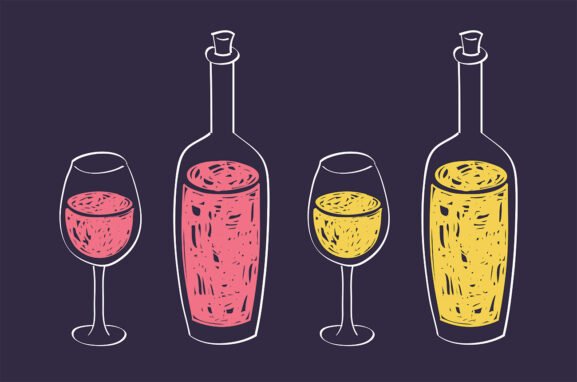How Fresh Is Your Beer?
Freshness is as important to beer as it is to bread. That’s why Neil Witte was concerned. On recent visits to his local liquor shop he started to notice a disturbing trend in the beer aisle.
“I look closely at the date codes on a regular basis, and I wouldn’t touch the vast majority of it,” says Witte, a draft beer expert and the associate director of exams for the Cicerone Certification Program. “So much of [the beer] is warm and dusty. If there is a date code, it’s often several months old or past the best by date.”
Beer is a product best consumed fresh. For professional brewers who spend their careers creating and releasing recipes, few things are more important than making sure the consumer gets a quality pint that tastes like it should.
Experts like Witte can easily spot suboptimal offerings. The rest of us, however, likely need a crash course in making sure we buy a winner, not a dud.
How to Identify the Freshest Beer
The best place for fresh beer is at the source. There are nearly 10,000 breweries in the country today and the ability to have just-released beer is best in a brewery’s taproom or beer garden. Of course, beer is also meant to travel, and larger breweries have perfected distribution networks to make their beer available to customers in all 50 states and beyond. From store shelves to the corner bar, there is a seemingly endless choice on what to drink next.
Customers rarely blame a store or a restaurant if a beer tastes “off” rather choosing to point fingers at the brewery. That’s fair to a point, but it should also be up to the accounts to make sure what they are selling is up to date.
There are some immediate tell-tale signs to look out for. One of the most obvious ones is dust. If a bottle or can is on a shelf and has a good amount of dust, the first thing is to consider finding a better beer shop, but the second is to assume it’s been sitting around for a while.
Another sign is seasonal beers and special one offs. If a brewery’s summer ale is on shelves in the dead of January, it’s likely from last year and likely showing signs of being off. Or if a beer label is boasting a seasonal ingredient, like gingerbread, and it’s mid-July, that could also be a tip off that it’s past its prime.
Most craft beer is canned these days and brewers print ink date codes on each can. Some will offer best buy dates—labeled “BB”—while others will print the date it was packaged.
Some rules of thumb: India pale ales are usually best consumed within four to five months of packaging. Pilsners and stouts are good for about six months. Meanwhile, stronger beers with high abv or rauchbiers can be aged for years, and some gueuze beers can be cellared for decades.
If a brewery’s date codes are illegible, it’s best to leave that beer behind.
Why Fresh Beer Matters
“As beer gets older and older, there’s some pretty distinctive, negative flavors that pop up,” says Witte, who is also the owner and founder of Craft Quality Solutions in Kansas City. “It can veer significantly from what the brewer intended that beer to originally be.”
The IPA is the most popular category in craft beer. Within just a few weeks or months after it’s bottled, its taste can start to drop off. The first thing drinkers might notice is that some of the hop flavors and aromas—the defining characteristics of the style—begin to lessen and as more time passes it will become even more muted. The same can happen with fruit beers or other ales or lagers that have specialty adjuncts like herbs.
In some darker beers, the malt will become sweeter and take on a bit of slickness over time.
Lighter colored beers might begin to taste a bit papery.
There are some beers like imperial stouts and barleywines—especially when bottled –might get some oxidation, like wet cardboard. For well-aged, properly stored beers that’s acceptable. It is not for fresh ones.
What About Draft Beer Freshness?
Without seeing a date code, it can be tough to tell when a beer on tap is fresh or if the lines have been clean. Most breweries are militant about cleaning their lines regularly, flushing out any old beer or residue, so that what is poured from kegs or bright tanks is clean.
Be wary of bars that boast large amounts of taps. If a bar has over 30 taps, it’s a good bet that some of the beer being offered has been sitting around for a while.
Similarly, long draft lines, like 100 feet or more from keg to tap, run the risk of beer warming in the lines between pours. Draft lines should also be replaced between kegs for smoked beers or aggressively fruited beers, so the flavor does not transfer into the next one on the line. There are several states that mandate draft line cleaning, and many distributors offer a cleaning service to make sure draft beer tastes fresh.
Overall, trust your instinct. If something tastes off, it likely is. Learn to frequent the shops, bars, and breweries that are committed to freshness. Remember, beer is a perishable product.
“There’s just a point where you don’t eat the bread anymore, there’s a point where you don’t drink the milk anymore, and there’s a point where you don’t drink beer anymore because it just is not going to be good,” Witte says.
More Beer Coverage
TOP-SELLER
Personalized Beer Stein
In Stock | $60.00
Published: July 1, 2024

